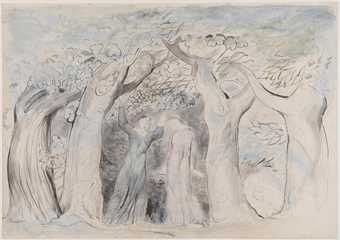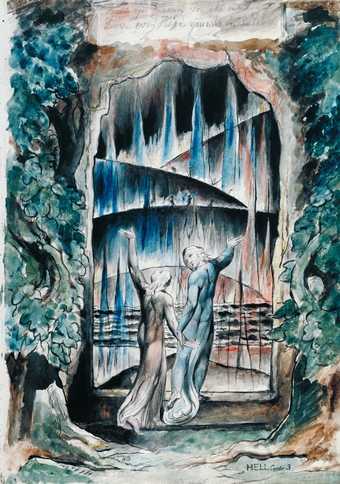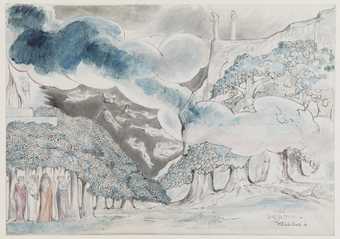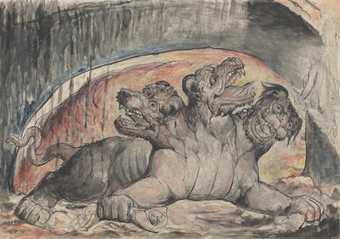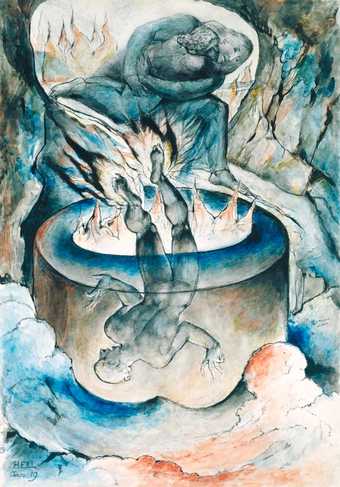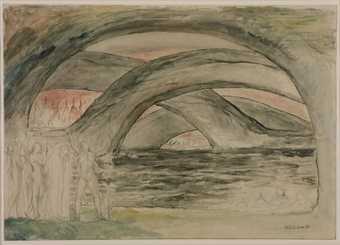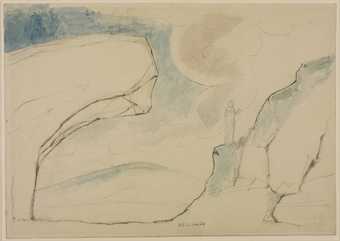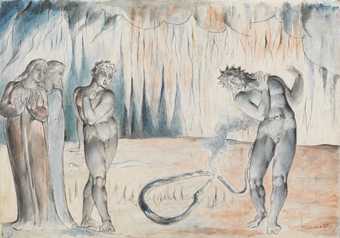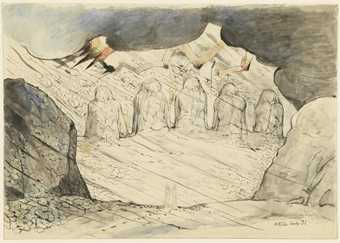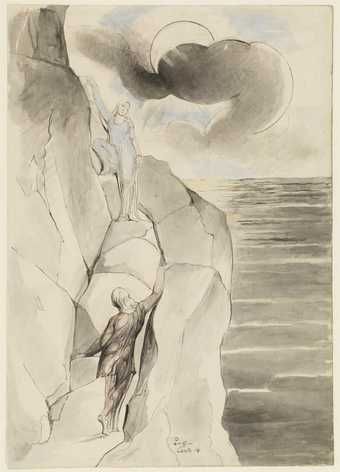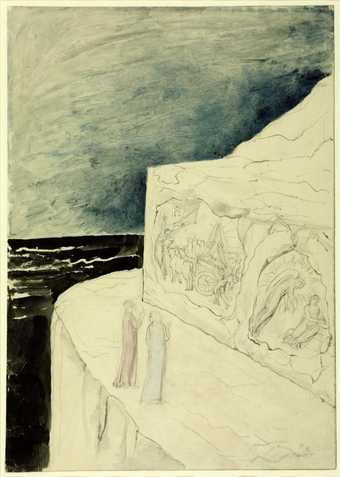
Not on display
- Artist
- William Blake 1757–1827
- Medium
- Graphite, ink and watercolour on paper
- Dimensions
- Support: 527 × 371 mm
- Collection
- Tate
- Acquisition
- Purchased with the assistance of a special grant from the National Gallery and donations from the Art Fund, Lord Duveen and others, and presented through the Art Fund 1919
- Reference
- N03355
Display caption
In Dante’s text Plutus, the god of riches, guards the souls of the avaricious. Evoking a belief commonly held at the time that the Jewish race was characterised by an unscrupulous desire for wealth, Blake’s figure has features that recall 18th-century images of Jews.
Anti-Semitism permeated Lavater’s system of physiognomy, and was influenced by his personal interpretation of the Christian faith. At one stage Lavater argued that in order to achieve a higher level of existence, Jews must convert to Christianity, after which their features would begin to shed their Jewish characteristics.
Gallery label, March 2011
Does this text contain inaccurate information or language that you feel we should improve or change? We would like to hear from you.
Catalogue entry
N03355 Plutus 1824–7 [A00005-A00011; N03351-N03370; T01950-T01956; complete]
N 03355 / B 812 14
Pencil, pen and watercolour 527×371 (20 3/4×14 5/8)
Inscribed ‘Money’ in pencil on sack b.l. and, on reverse in pencil, with page upside down, ‘93’ t.l.
Watermarked ‘WE’
Purchased with the assistance of a special grant from the National Gallery and donations from the National Art-Collections Fund, Lord Duveen and others, and presented through the National Art-Collections Fund 1919
PROVENANCE As for N03351
EXHIBITED Tate Gallery 1942 (62); National Art-Collections Fund: Sixty Years of Patronage, Arts Council, September–October 1965 (35)
LITERATURE Rossetti 1863, p.217 no.101n, and 1880, p.228 no.123n; Roe 1953, pp.68–9 no.14, repr.; Klonsky 1980, p.140, pl.14: Butlin 1981, p.560 no.812 14; Gizzi 1983, p.92 repr.; Fuller in Art History 1988, p.365
This is an illustration to Inferno VI, 113–15, and VII, 1–12. Plutus, the God of Wealth, guards the edge of the fourth Circle, that of the Avaricious, clutching his money-sack. Dante blurred the distinction between Plutus and Pluto, the God of the Underworld.
As Klonsky points out, Blake had attacked money in one of the inscriptions on his engraving of ‘The Laocoön’ of c.1820 (repr. Bindman Graphic Works 1978, pl.623, and Essick Separate Plates 1983, pl.51): ‘Where any view of Money exists Art cannot be carried on, but War only’.
Published in:
Martin Butlin, William Blake 1757-1827, Tate Gallery Collections, V, London 1990
Explore
- emotions, concepts and ideas(16,416)
-
- emotions and human qualities(5,345)
-
- avarice(7)
- characters(438)
- miscellaneous(732)
-
- money(254)
- actions: expressive(2,622)
-
- gesticulating(130)
- linking arms(17)
- crouching(276)
- man(10,453)
- male(959)
- mythical, religious, fictional(260)
-
- Hell(93)
- Hell(252)
You might like
-
William Blake The Serpent Attacking Buoso Donati
1826–7, reprinted 1892 -
William Blake Dante and Virgil Penetrating the Forest
1824–7 -
William Blake The Inscription over the Gate
1824–7 -
William Blake Homer and the Ancient Poets
1824–7 -
William Blake Cerberus
1824–7 -
William Blake The Simoniac Pope
1824–7 -
William Blake The Devils, with Dante and Virgil by the Side of the Pool
1824–7 -
William Blake The Hypocrites with Caiaphas. Verso: Sketch of a Stooping Figure
1824–7 -
William Blake The Laborious Passage along the Rocks
1824–7 -
William Blake The Pit of Disease: The Falsifiers
1824–7 -
William Blake The Primaeval Giants Sunk in the Soil
1824–7 -
William Blake The Ascent of the Mountain of Purgatory
1824–7 -
William Blake The Rock Sculptured with the Recovery of the Ark and the Annunciation
1824–7 -
After John Flaxman The Rain of Fire
1807


